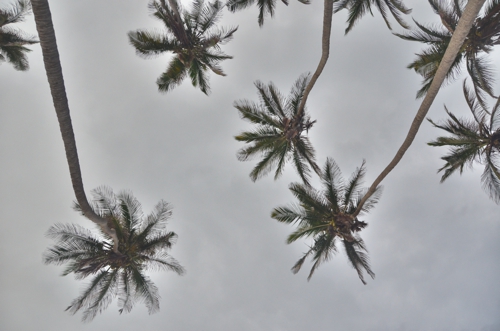
It should go without saying that people who live in a particular area probably know what they’re talking about, but when myself and two Scandinavian travelers were hiking in Colombia’s Parque Tayrona around this time last year, we wanted to hear nothing of the sort.
“They’re just trying to scare us,” Charlotte, a spunky Dane, exclaimed as she led us back behind the campground at Playa San Juan. “We’ll head out over the other side of the mountain.”
I nodded. “Yeah, they probably think we’re fools, like half the other tourists here.”
“Wait a minute,” said Christian, from Sweden, as we began scaling the first of the boulders at the base of the mountain. “What exactly did they say?”
Charlotte was nonchalant. “Well, they just said it would be a bad idea to go this way, but when I asked them to elaborate, they said no.”
“Maybe there’s a scary jungle monster up there,” I laughed, as we continued on our way up the mountain.
None of us wanted to hear the news the locals were giving us – that it wouldn’t be a good idea to take the “back way” out of Tayrona Park – because (a) The back way was much more direct, as least on the map and (b) The mountain was apparently crowned by a charming old pueblito that dated back to precolonial times.
To be sure, although much of the first half of the hike was strenuous – it entailed scaling boulders of various shapes, sizes and slipperiness – it never seemed, for even an instant, that continuing on would be hazardous to our safety, let alone particularly harrowing.
Within just a few hours, in fact, we had reached what we assumed to be the top of the mountain, and were walking through the pueblito ruins we’d been so excited about seeing.
We were also enjoying a much needed rest: Three hours of not-extremely-tiring hiking and climbing had added up to a relatively high level of fatigue.
“The great news,” Charlotte said confidently, as she placed her water bottle back into her backpack, “is that it’s all downhill from here.”
Just then, a thundering crash rang out, seemingly from all corners of the sky at once. Christian and I exchanged worried glances, but our enthusiastic ringleader would have nothing of it.
“We knew it was going to rain today,” she said, and donned her poncho. “And we came prepared!”
The problem was not that it started to rain; it’s that the rain was so torrential that within just a few minutes, it was affecting our visibility.
This would’ve been fine, had it not been for the fact that the rain also soon washed away the distinction between what was actually a hiking path and what was just dirt. The laneways that had previously been trails quickly became flowing rivers of mud, which were as difficult to make sense of as they were to step in and out of.
And so you see, just moments after confidently reaching the peak of the mountain we’d been warned sternly – but, to our credit, nonspecifically – not to ascend, we were quite literally running for our lives through a seemingly endless jungle, without anything but the occasional “## km remaining” sign to guide our way.
As if we weren’t screwed enough, sprinting toward a destination that may or may not have been located in the direction we were moving, we then heard a loud roar coming from somewhere up ahead of us – it seemed, for a moment at least, that my concerns RE: the jungle monster had been well-founded.
The good news? We ran into some friendly jungle children soon after we heard the second roar. The terrible news? They didn’t seem to speak or understand Spanish, at least not our frenzied, gringo Spanish.
Of course, frenzied gringos trapped in the Colombian rainforest during a monsoon downpour can only be in search of one thing – the exit – so they led us for a few minutes until the path-turned-river began a sharp descent we assumed could only have led to the way out.
Obviously, since I am typing this from the safety of my developed-country home now, you know that these children weren’t leading us to the lair of the monster that may or may not have actually existed and that we did eventually reach the exit. (By “eventually,” I mean after nearly three hours of running, at full speed, down the other side of the mountain.)
The kicker is that when we finally got to within .1 km of the exit, we had to literally wade across an actual river, which was nearly waist high and moving extremely fast. I am frankly shocked that none of us got sucked into it.
I’ve never quite felt a sense of relief like the one that came over me when the fifth or sixth collectivo that passed through the shithole town where Parque Tayrona spit us out had space enough to accommodate us all the way back to Santa Marta, the city where the majority of travelers who visit the park stay.
And I will never again ignore the advice of a local person, no matter how vague or veiled in superstition it seems to be.

Robert Schrader is a travel writer and photographer who’s been roaming the world independently since 2005, writing for publications such as “CNNGo” and “Shanghaiist” along the way. His blog, Leave Your Daily Hell, provides a mix of travel advice, destination guides and personal essays covering the more esoteric aspects of life as a traveler.








